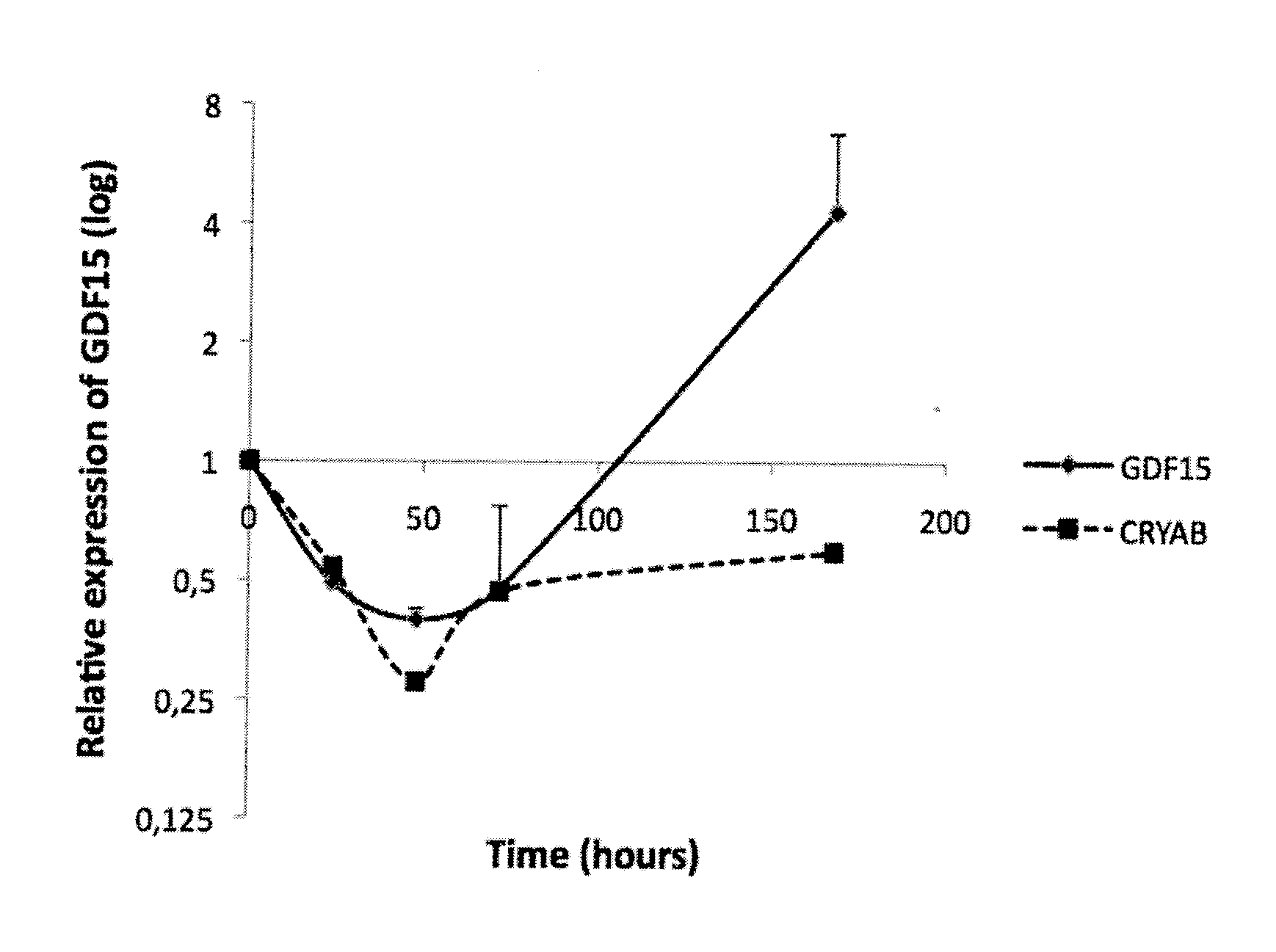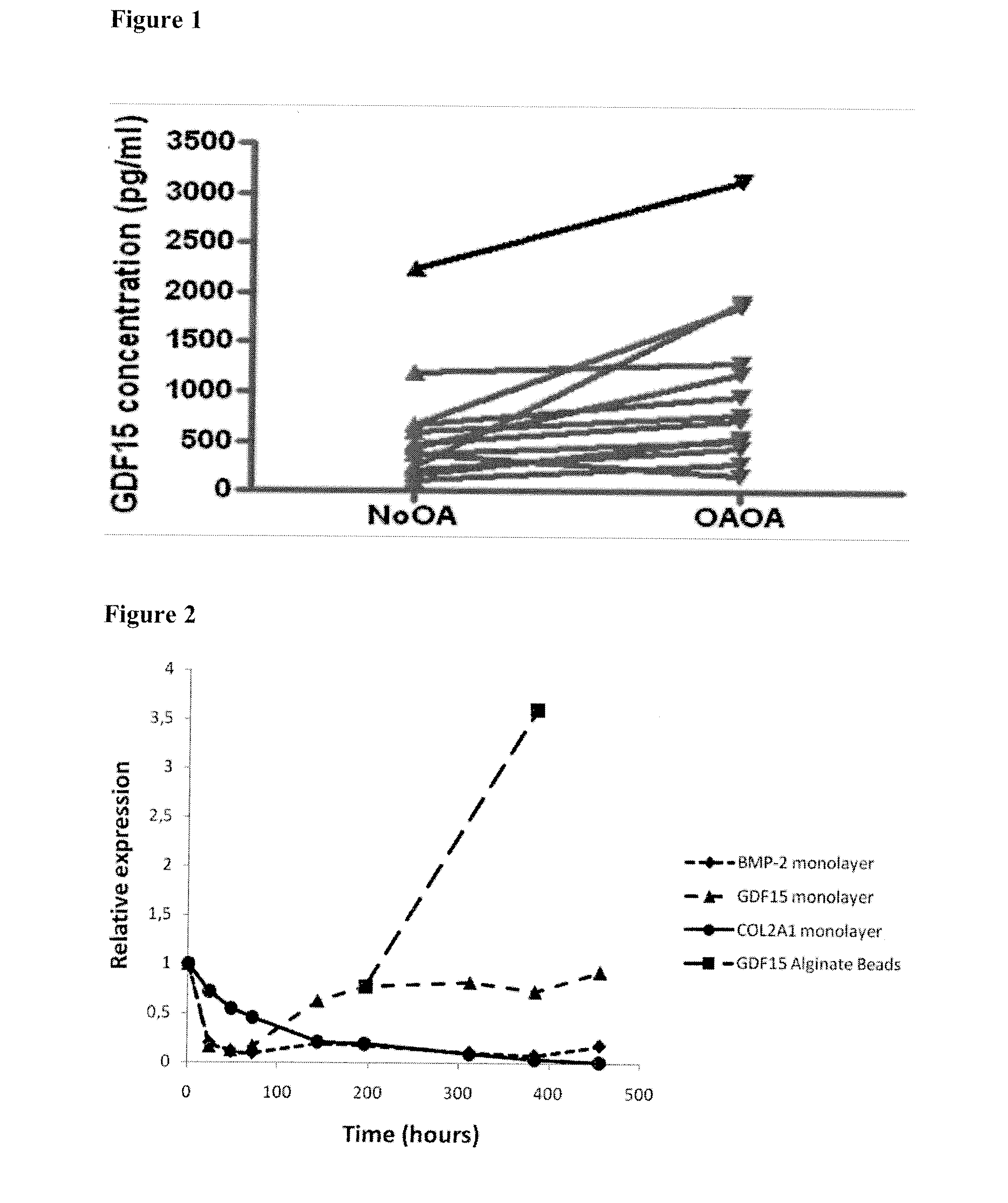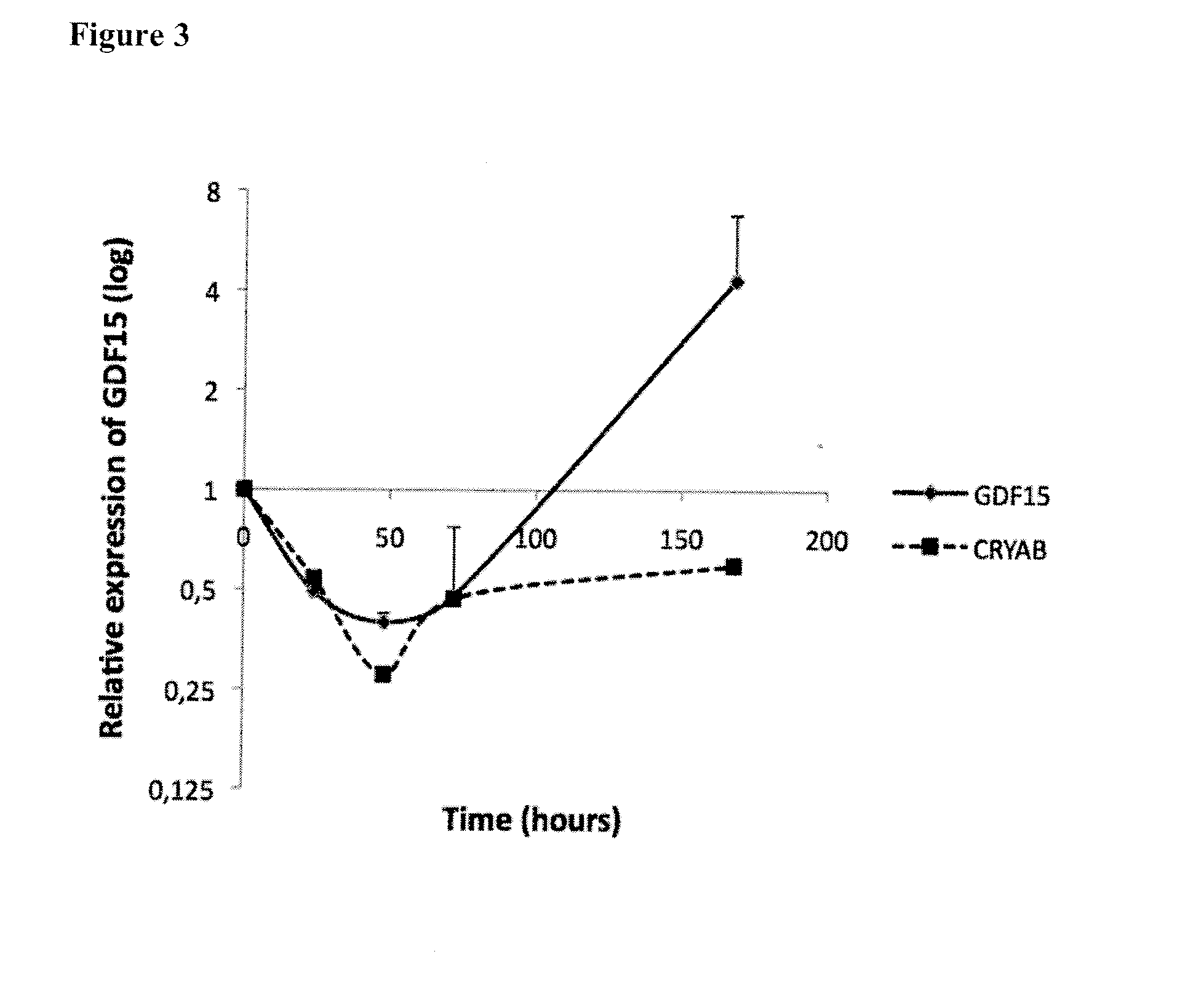Gdf15 as molecular tool to monitor and enhance phenotypic stability of articular chondrocytes
a chondrocyte and phenotype technology, applied in the field of transforming growth factor (tgf), can solve the problems of limiting the function of joints, affecting the osteoarthritis of the involved joints, and rarely effective repair processes in healing defects, etc., and achieves the effect of enhancing the expression of matrix proteins
- Summary
- Abstract
- Description
- Claims
- Application Information
AI Technical Summary
Problems solved by technology
Method used
Image
Examples
example 1
Results
Elevated GDF15 Concentrations in OA-Patients and OA-Chondrocyte Cultures
[0106]GDF15, secreted by human articular chondroctes isolated from visually intact (NoOA) and visually damaged (OAOA) zones of OA articular cartilage respectively, was analysed by measuring GDF15 concentrations in culture supernates of 13 different paired samples. FIG. 1A shows a consistent higher concentration in chondrocyte cell cultures from visually damaged zones compared to visually intact zones (p<0.01; Wilcoxon signed rank test).
example 2
Dedifferentiation Experiments
[0107]Articular Chondrocytes
[0108]Phenotypically stable articular chondrocytes isolated from 3 OA-patients were seeded in monolayer culture at low density (20.000 cells / cm2). When confluency was reached, cells were detached and reseeded at the initial density. At particular time points, cells were detached and encapsulated in alginate beads for 8 days, as described above. At indicated time points Trizol (Invitrogen) was added to the isolated cells, and RNA was extracted according to the manufacturer's instructions, followed by an additional purification step (RNeasy mini-kit (Qiagen)). This step included the digestion of DNA by deoxyribonuclease I (Invitrogen). cDNA was synthesized with oligo(dT) primers using the Superscript kit (Invitrogen).
[0109]Meniscus Chondrocytes
[0110]Phenotypically stable meniscus chondrocytes, isolated from 2 OA-patients were seeded in monolayer culture at low density (20.000 cells / cm2) and allowed to expand for about 170 hours...
example 3
Western Blot Analysis
[0112]Cell lysates of articular chondrocytes were prepared by resuspending cell pellets in 40 mM Tris from the ReadyPrep Sequential Extraction Kit (Bio-Rad, Hercules, Calif., USA), supplemented with 0.1% SDS, containing protease inhibitors (Roche Diagnostics, Mannheim, Germany) and a phosphatase inhibitor-cocktail (Sigma-Aldrich, Steinheim, Germany). Cells were lysed by sonication and the proteins were isolated by centrifugation. Equal amounts (30 μg as determined by 2-D Quant kit, GE Healthcare, Fairfield, USA) were loaded on 10% SDS-PAGE gel. Equal loading was verified by Ponceau S staining (data not shown). MagicMark (Invitrogen, Paisley, UK) protein standards were run as molecular weight markers. Following 1-D gel electrophoresis, proteins were transferred to nitrocellulose membranes (Bio-Rad). The resulting membranes were immunostained with rabbit anti-GDF15 (Abcam, Cambridge, UK) followed by an anti-rabbit HRP-conjugated secondary antibody (Pierce, Rockfo...
PUM
| Property | Measurement | Unit |
|---|---|---|
| concentration | aaaaa | aaaaa |
| time | aaaaa | aaaaa |
| concentration | aaaaa | aaaaa |
Abstract
Description
Claims
Application Information
 Login to View More
Login to View More - R&D
- Intellectual Property
- Life Sciences
- Materials
- Tech Scout
- Unparalleled Data Quality
- Higher Quality Content
- 60% Fewer Hallucinations
Browse by: Latest US Patents, China's latest patents, Technical Efficacy Thesaurus, Application Domain, Technology Topic, Popular Technical Reports.
© 2025 PatSnap. All rights reserved.Legal|Privacy policy|Modern Slavery Act Transparency Statement|Sitemap|About US| Contact US: help@patsnap.com



